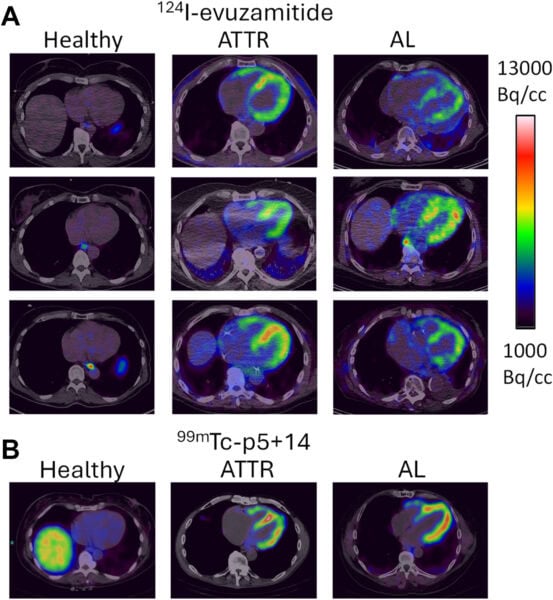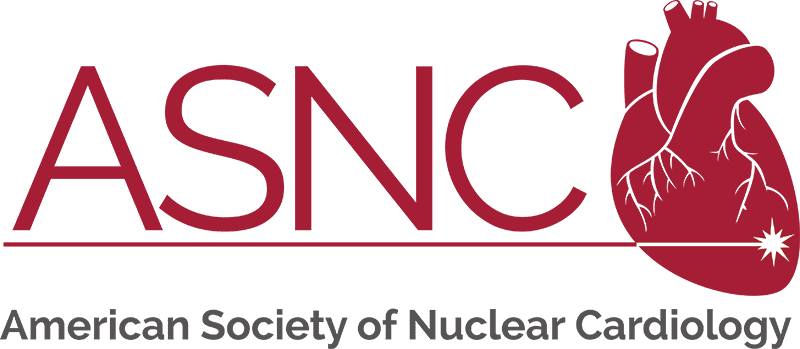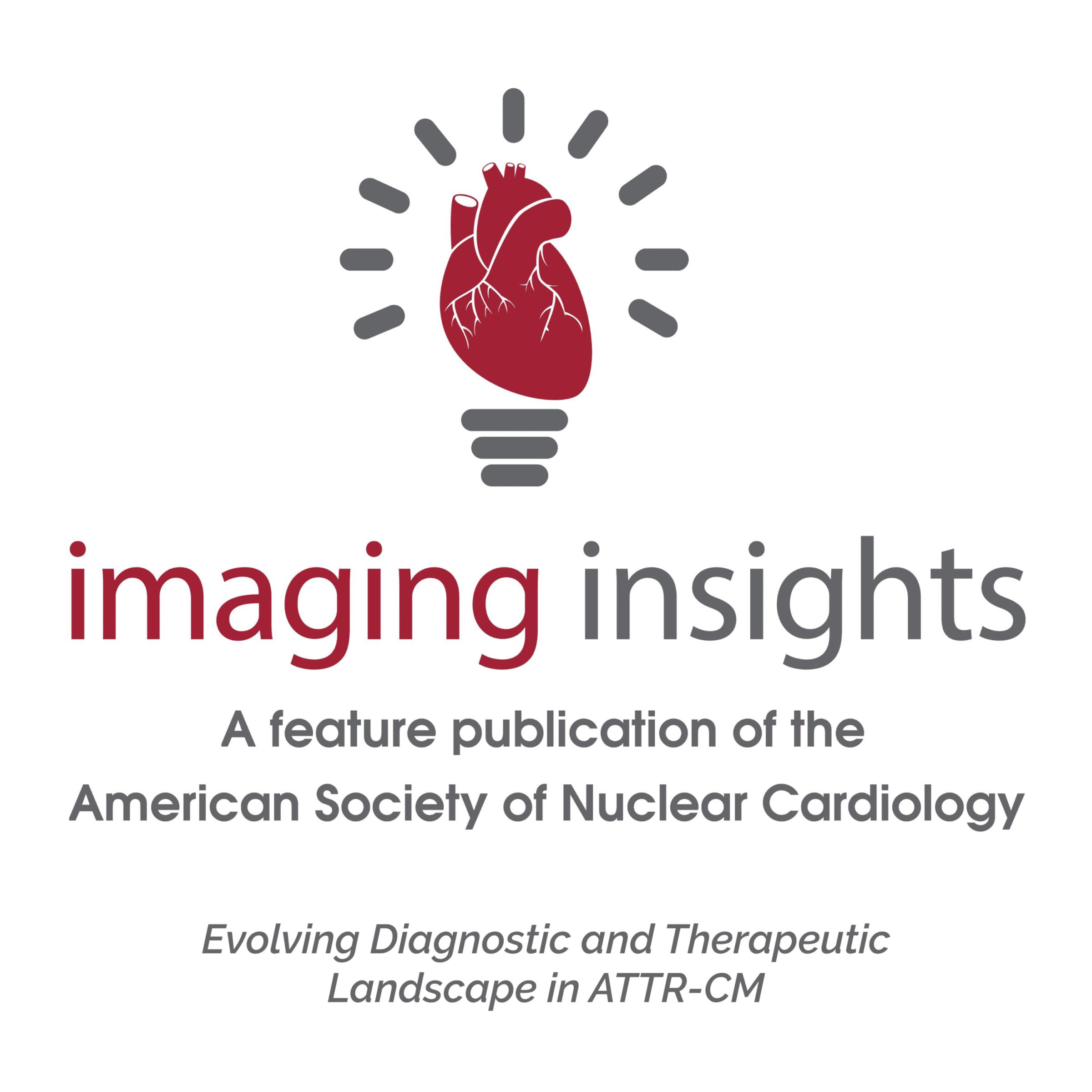Pan-Amyloid Tracers Coming! How Will They Change the Landscape?
Imagers could soon have new radiotracers for diagnosing not just TTR amyloidosis but also AL and the 18 other known types of systemic amyloid. In studies presented at ASNC2025, two investigational radiotracers – the PET/CT radiotracer (124I) evuzamitide and the SPECT agent 99mTc-p5+14 (AT-05) – demonstrated high levels of sensitivity and specificity for detecting cardiac amyloid in ATTR and AL patients. Results from phase 3 of the REVEAL trial (1), due out early next year, could set the stage for FDA approval of 124I-evuzamitide in 2027, or even sooner, says Jonathan S. Wall, PhD, the biochemist whose team invented the peptide on which both tracers are built.
"In my mind, there’s a big difference between having amyloid and having amyloidosis. It comes down to understanding the disease and being able to observe it better. With new things to look at, it can help to prognosticate, to risk-stratify, to treat, and ultimately to help more people. That’s the exciting part – enabling creative physicians to get more from an image."
- Jonathan S. Wall, PhD
Distinguished Professor
University of Tennessee Health Science Center College of Medicine-Knoxville

Creating the synthetic peptide known as p5+14 and then discovering that it had pan-amyloid reactivity was a key moment in the “diagnostic odyssey” that Dr. Wall and his team at the University of Tennessee Health Science Center College of Medicine-Knoxville embarked on nearly 20 years ago. The lightbulb went off when Dr. Wall learned that unique sugar molecules are a universal component in all amyloid. “I thought, that’s the target,” he recalls. “That’s what we need to bind to.”
Add the radionuclide iodine-124 to p5+14 and you get 124I-evuzamitide, the PET/CT tracer that earned the FDA’s breakthrough therapy designation in 2024.
Or add technetium-99m to p5+14 to create AT-05. Dr. Wall estimates the SPECT radiotracer is approximately 3 years behind its PET counterpart in clinical development and potential regulatory approval.
An article in the Journal of Nuclear Cardiology provides an in-depth analysis of the two investigational tracers and considers where each might fit in nuclear cardiology practice. (2) Authored by Dr. Wall’s team and Spencer Guthrie, MPH, the article concludes that the agents have complementary strengths and could be valuable in different markets and to answer different questions.
We caught up with Dr. Wall at ASNC2025 for a conversation about how the new tracers might transform the cardiac amyloidosis landscape. Consider these possibilities:
Seeing More: The Pan-Amyloid Effect
Both 124I-evuzamitide and 99mTc-p5+14 (AT-05) are pan-amyloid tracers, meaning they could potentially be used in the diagnosis of all types of amyloidosis. That was priority #1 for Dr. Wall’s lab. “We wanted something that would help everyone,” he says. “That’s why pan-amyloid is important. It allows pan-detection and it could possibly lead to pan-treatment.”

PET/CT imaging of 124I-evuzamitide (A) and SPECT/CT imaging of 99mTc-p5+14 (B) showed radiotracer uptake in both AL and ATTR amyloid throughout the myocardium in patients diagnosed with cardiac amyloidosis; in contrast, no uptake was seen in healthy subjects. Figure reprinted with permission of the publisher. View the article here.
The potential for pan-amyloid imaging could open the door for nuclear cardiologists to branch into diagnosing amyloid types other than ATTR. “Right now, nuclear cardiologists are specializing in TTR amyloid because that’s what the tracer they have – PYP – shows,” Dr. Wall says. “They are limited by what they can think about because of what they are able to see. That’s what we want to change.”
More Reason to Expand into Cardiac PET
Around the world, enthusiasm around cardiac PET is building. Should 124I-evuzamitide's solid prospects for FDA approval nudge even more SPECT labs toward expanding into PET imaging?
It certainly strengthens the case for increasing cardiac PET, Dr. Wall says, especially if your lab is already doing a lot of PYP bone scintigraphy imaging or if you are a regional cardiologist serving a rural area that needs a center of excellence. “We could certainly do with more amyloid specialists,” he adds, “especially since the consensus is that only 20 to 30 percent of people with ATTR are getting diagnosed.”
Potential for Monitoring Response to Therapy
With three medications available for treating ATTR-CM and more in the pipeline, physicians are eager for a means to monitor the effects of therapies in their patients. That goal could get a boost from the combination of the high-resolution, quantification, and sensitivity of 124I-evuzamitide and PET/CT’s ability to bind directly to amyloid and provide quantitative images..
“The advantage of peptides over PYP is that we know the peptides bind to amyloid, so we know we’re seeing amyloid,” Dr. Wall explains. “We don’t yet understand what PYP is binding to in the ATTR amyloid-laden heart. That’s why PYP is not used for monitoring response to therapy.”
In the future, a physician might be able to order periodic PET/CT scans using 124I-evuzamitide and see whether a patient undergoing treatment has more, less, or the same amyloid load in the heart or other organs. “Physicians won’t have to rely on some surrogate blood tests,” Dr. Wall adds. “You could just look at the scan and see the amyloid in the heart, the kidneys, and other organs."
Earlier Detection: Living with Amyloid, Not Amyloidosis
In Dr. Wall’s lab, the holy grail is now prevention and a cure for amyloidosis.
He envisions a future where imaging would pick up amyloid “specks” so early that physicians could start treatment before symptoms develop. “In my mind, there’s a big difference between having amyloid and having amyloidosis,” he explains. “It comes down to understanding the disease and being able to observe it better. With new things to look at, it can help to prognosticate, to risk-stratify, to treat, and ultimately to help more people. That’s the exciting part – enabling creative physicians to get more from an image.”
References
- Dorbala S. Research with I-124 EVuzamitide to Elucidate Cardiac AmyLoidosis (REVEAL). ClinicalTrials.gov. Updated August 17, 2025. Accessed September 20, 2025. https://clinicaltrials.gov/study/NCT06788535
- Martin EB, Kassira A, Stuckey A, Whittle B, Guthrie S, Kennel SJ, Wall JS. A tale of two tracers – Amyloid imaging with investigational radiotracers iodine (124I) evuzamitide and 99mTc-p5+14 (AT-05). J Nucl Cardiol. Published online September 5, 2025. DOI: 10.1016/j.nuclcard.2025.102451

